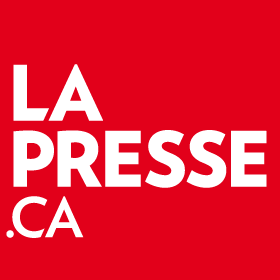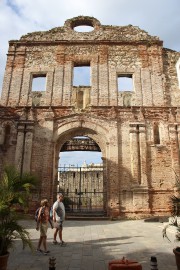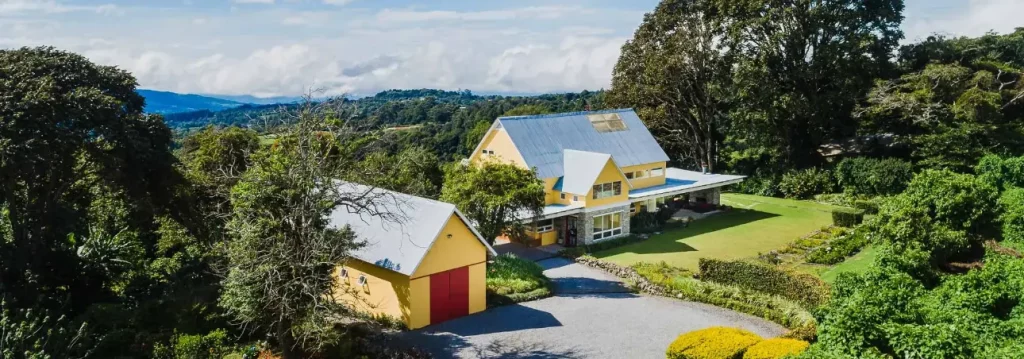The regular addition of international flights to Panama along with Panama’s increasing visibility due to high profile press is resulting in the rise of Panama Tourism. This article in French (along with the Google translated version) features recently added direct flights from Montreal and the historical, trendy old city Casco Viejo.
The article also has a photo of Parque Natural Metroplitano, the Natural Park within Panama City limits. During a visit to the Park, I was astounded to see few other visitors; wide and easy to walk trails leading through gorgeous tropical forests. The wildlife visible from the trail was wonderful. In less than two hours, we spotted troupes of Geoffroy’s Tamarin monkeys, an agouti, and a huge red headed wood pecker.
La Presse, March 10, 2015 by Marie-Eve Morasse
“À la faveur de vols directs lancés il y a quelques années par Air Transat et Copa Airlines, Panama s’est rapproché de Montréal comme jamais. Un argument convaincant pour aller prendre le pouls de cette ville en pleine transformation.
Des touristes passent devant les ruines du couvent de Santa Domingo, ravagé par le feu en 1756.
Vue des airs, la ville de Panama reste insaisissable. Gratte-ciels bordés de grues, centre-ville épars qui ne rassemble personne, circulation bordélique. Jusqu’à tout récemment, on ne savait trop où s’y poser, si ce n’est sur le bord de la piscine d’une grande chaîne hôtelière. Or, un quartier commence à se démarquer auprès des touristes toujours plus nombreux à visiter la ville.
Depuis quelques années, un quartier historique de Panama, où aucun touriste n’osait s’aventurer, revit au coeur de cette capitale qui se cherche. Casco Viejo a souvent été comparé à Miami, puis à Brooklyn, surtout en raison de ses hôtels et restaurants branchés. Mais ce quartier à l’architecture tantôt Art déco, tantôt coloniale prend surtout des airs de vieille Havane, avec ses ruelles pavées et ses édifices magnifiquement restaurés… ou en ruines.
Il y a deux ans, tu n’aurais pas marché jusqu’ici Derrière le bar de son restaurant, le chef José Carles, 29 ans, est à l’image du quartier en transformation. Il a ouvert son établissement de Casco Viejo après quelques années à parfaire ses connaissances en Australie. En plus d’y travailler, il y réside. C’est le seul quartier où je vivrais à Panama. Il a une histoire, une essence», dit ce natif de la capitale.
Bien que son restaurant de 16 places soit situé à la lisière de Casco Viejo, à quelques rues du rude quartier Chorillo, sa popularité ne se dément pas. On se déplace de partout en ville pour venir manger chez «Donde José», qui offre aux clients un menu fixe.
Sa cuisine métissée est à l’image de la ville, voire du pays en entier. C’est anti-panaméen de faire de la cuisine panaméenne, dit ce descendant d’Italiens. On embrasse toutes les influences. Je crois que nous sommes encore trop jeunes pour dire ce que nous sommes.
Le chef parle de cuisine, mais il pourrait tout aussi bien être en train de décrire sa ville. Depuis quelques années, Panama s’est développé à une vitesse effrénée. Les gratte-ciels ont poussé dans cette ville de moins de 1 million d’habitants. Un réseau de métro a été creusé et la ville, à l’image de bien d’autres métropoles, a inauguré cette année son musée signé par l’architecte canadien vedette Frank Gehry.
Inscrit à la liste du patrimoine mondial de l’UNESCO depuis 1997, le quartier Casco Viejo s’est d’abord transformé lentement. Sans fracas, la vieille ville a peu à peu rajeuni. L’an dernier, la très branchée chaîne Ace Hotel y a ouvert un établissement dans un bâtiment de 1917 fraîchement restauré.
Le changement le plus visible, c’est la restauration des bâtiments historiques, explique Matt Landau, un Américain qui a investi dans la vieille ville. Quand je suis arrivé, il y a huit ans, un faible pourcentage des bâtiments était rénové. Les Panaméens commencent eux aussi à apprécier le quartier. C’est le centre de la vie nocturne.
Les touristes ont suivi et sont aujourd’hui nombreux à arpenter les rues de la vieille ville, sous le regard bien présent des policiers. Ils viennent pour voir la vieille cathédrale au coeur de la ville ou le palais présidentiel, mais aussi pour admirer la vue sur les gratte-ciels. Le soir, Casco vibre et fait la fête jusqu’à tard dans la nuit.
La fondation de tout ça, c’est la communauté. Il faut qu’il y ait une vision partagée, pour que le quartier soit accueillant autant pour les gens qui veulent faire de l’argent que pour ceux qui veulent habiter dans le quartier», indique un entrepreneur qui refuse d’être nommé, de peur de faire ombrage aux autres membres de la communauté.
Tout le monde doit avoir le crédit pour le développement de Casco», dit cet Américain, propriétaire de plusieurs hôtels.
Le charme du quartier réside en effet dans sa mixité. Les prix ont augmenté avec l’arrivée des touristes, la «mauvaise bouffe et les boutiques de souvenirs» ont aussi pignon sur rue, observe sans complaisance Matt Landau. Mais le quartier n’a pas perdu son âme. Les enfants qui pataugent dans leur piscine gonflable au beau milieu de la rue ont encore leur place, et c’est sous le regard attendri des touristes qu’ils s’amusent.”
Google Translated:
In favor of direct flights launched it a few years ago by Air Transat and Copa Airlines, Panama has moved closer to Montreal than ever. A convincing argument to catch the pulse of this city in transformation.
A flight over Panama City remains elusive. Skyscrapers lined cranes scattered city that brings together individual, chaotic traffic. Until recently, it was not clear where to put it, if it is on the pool side of a large hotel chain. Now a neighborhood begins to stand out from the growing number of tourists visiting the city.
In recent years, a historic district of Panama, where no tourist dared to venture, saw the heart of the capital in search of itself. Casco Viejo has often been compared to Miami and then Brooklyn, mainly because of its hotels and restaurants. But sometimes the district Art Deco architecture, sometimes especially colonial Old Havana
takes tunes, with its cobbled streets and beautifully restored buildings … or in ruins.
“There are two years, you would not have walked here,” Behind the bar of the restaurant, the chef José Carles, 29, is the image of the neighborhood transformation. He opened his establishment of Casco Viejo after a few years to perfect his knowledge in Australia. In addition to work, he lives there. “This is the only area I live in Panama. It has a history, petrol, “said the native of the capital.
Although the restaurant seats 16 is located at the edge of Casco Viejo, a few blocks from rough neighborhood Chorillo, its popularity continues unabated. It moves across town to come and eat at “Donde José”, which offers customers a fixed menu.
Its fusion cuisine is a reflection of the city, or the whole world. “It’s anti-Panama to the Panamanian food, said the descendant of Italians. It embraces all the influences. I think we are still too young to say what we are. “
The leader talks about cooking, but it might as well be trying to describe his city. In recent years, Panama has developed at a frantic speed. Skyscrapers have sprouted in this city of less than 1 million inhabitants. A subway system was dug and the city, like many other cities, inaugurated this year the museum signed by the Canadian star architect Frank Gehry.
Registered on the list of UNESCO World Heritage since 1997, the Casco Viejo neighborhood is first transformed slowly. Without fuss, the old town has gradually rejuvenated. Last year, the trendy Ace Hotel chain it opened a business in a newly restored 1917 building.
“The most visible change is the restoration of historic buildings, says Matt Landau, an American who has invested in the old town. When I arrived, there was eight years old, a small percentage of the buildings were renovated. Panamanians are also beginning to appreciate the neighborhood. It is the center of night life. “
Tourists followed and many are now walking the streets of the old town, watched very present police officers. They come to see the old cathedral in the heart of the city or the Presidential Palace, but also to enjoy the view of the skyscrapers. In the evening, Casco vibrates and partied late into the night.
“The foundation of all this is the community. There needs to be a shared vision for the neighborhood is welcoming both for people who want to make money for those who want to live in the neighborhood, “said a contractor who declines to be named, of afraid to overshadow the other members of the community. “Everyone should have the credit for the development of Casco,” said the American, owner of several hotels.
The charm of the district lies indeed in its diversity. Prices have increased with the arrival of tourists, the “bad food and souvenir shops’ storefront also observes uncompromising Matt Landau. But the area has not lost its soul. Children who are floundering in their inflatable pool in the middle of the street still have their place, and it’s under the tender gaze of tourists they have fun.





